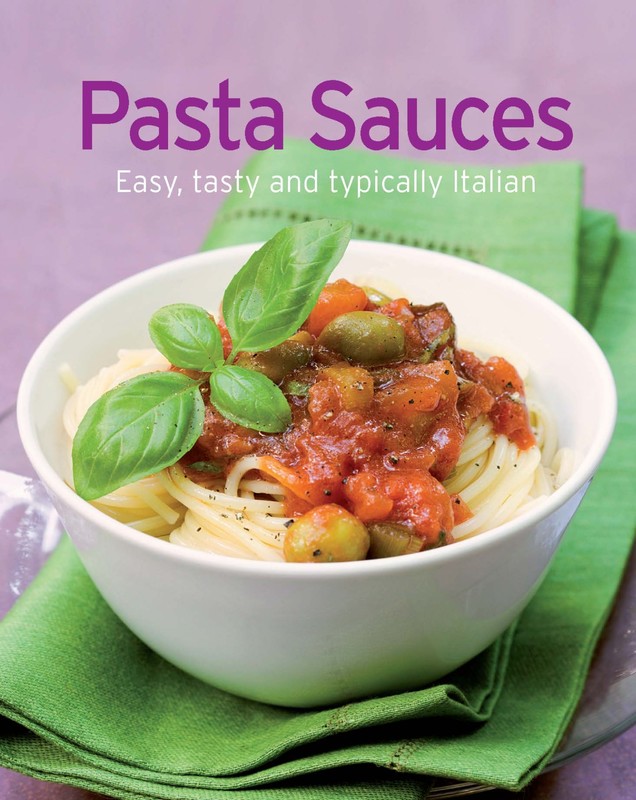 Pasta Sauces Are you a true pasta lover, and would ideally eat it every day? Well, why not? The sauces that make past a complete meal are just as varied and interesting as the ever-popular Italian delights. Whether classic pasta, creamy cheese, fish, seafood, meat or vegetable sauces, theres plenty of choice for your favourite pasta! Pasta Sauces Naumann & Gbel Verlagsgesellschaft mbH
Pasta Sauces Are you a true pasta lover, and would ideally eat it every day? Well, why not? The sauces that make past a complete meal are just as varied and interesting as the ever-popular Italian delights. Whether classic pasta, creamy cheese, fish, seafood, meat or vegetable sauces, theres plenty of choice for your favourite pasta! Pasta Sauces Naumann & Gbel Verlagsgesellschaft mbH
a subsidiary of VEMAG Verlags- und Medien Aktiengesellschaft
Emil-Hoffmann-Strae 1, 50996 Cologne (Germany)
www.vemag-medien.de
Recipe photographs: TLC Fotostudio
Cover photograph: StockFood
Translation from German: Mo Croasdale, in association with First Edition Translations Ltd, Cambridge
Complete production: Naumann & Gbel Verlagsgesellschaft mbH
All rights reserved
ISBN 978-3-8155-8775-1 Contents Introduction Traditional pasta sauces Carbonara Bolognese Arrabiata Traditional tomato sauce Lemon sauce Basil pesto Pesto with sundried tomatoes Ratatouille Cheese sauces Traditional cheese sauce Gorgonzola sauce Spicy cheese sauce Cheese sauce with meatballs Cheese sauce with celery Gorgonzola sauce with yellow peppers Cheese and salami sauce Gorgonzola and spinach sauce Ricotta and aubergine sauce Ricotta and courgette sauce Blue cheese, pear and walnut sauce Gorgonzola and broccoli sauce Fish & seafood sauces Tomato sauce with crayfish Orange and cream sauce with salmon Lemon sauce with salmon Orange sauce with king prawns Tomato sauce with tuna Tomato sauce with clams Tomato sauce with oysters Chinese shrimp sauce Lemon cream with scampi White wine sauce with clams Cream and scallop sauce Shrimp and vegetable sauce Saffron fish sauce Seafood sauce with vegetables Salmon and spinach sauce Tomato sauce with anchovy and olives Tuna sauce with capers Saffron sauce with mussels Tomato and sardine sauce Pepper and shrimp sauce Fish sauce with scampi Saffron sauce with seafood Mince sauce with shrimps Tomato sauce with swordfish Pepper sauce with squid Cream sauce with smoked eel Cream sauce with smoked salmon Meat sauces Meatball sauce with sheeps cheese Chicken liver sauce with red wine Rabbit ragout with redcurrant jelly Veal ragout with mushrooms Duck sauce with vegetables Asian sauce with bean sprouts Lamb ragout with chilli and peppers Hot sauce with duck Rabbit ragout with pancetta Veal ragout with asparagus Wine sauce with wild duck Venison ragout with bacon Peanut sauce with chicken Ratatouille with meatballs Mascarpone sauce with beef fillet Lamb stir fry with lentils Sausage goulash with tomatoes Rabbit with olive sauce and snail butter Morel sauce with bresaola Tomato sauce with Parma ham Wild boar sauce with prunes Chicken ragout with peppers Meatball sauce with spinach Chicken liver sauce with mushrooms Speedy bacon sauce Turkish lamb ragout Cheese and salami sauce with tomatoes Vegetable sauces Vegetable sauce with Cognac Chanterelle sauce with bacon Traditional mushroom sauce Artichoke sauce with tomatoes Pesto with watercress Parsley pesto with almonds Pumpkin sauce with sesame Tomato sauce with romanesco Tomato sauce with asparagus Tomato sauce with rocket Wild asparagus sauce with ham Cream sauce with mushrooms Bacon sauce with mushrooms Olive paste with artichokes and tomatoes Hollandaise sauce with vegetables Leek sauce with mushrooms Cream sauce with morels Aubergine sauce with ricotta Tomato sauce with sage butter Cream sauce with broccoli Mushroom sauce with minced meat Cream cheese sauce with broccoli Multicoloured vegetable sauce Cream sauce with cabbage Pizza-style sauce Mexican sauce Onion sauce with bacon Cream sauce with shiitake Sauce diabolo Pistachio cream with broccoli Sweet and sour sauce Spicy tomato sauce Yoghurt sauce with spring vegetables Vegetable sauce with courgettes and aubergines More Gourmet eBooks! Introduction 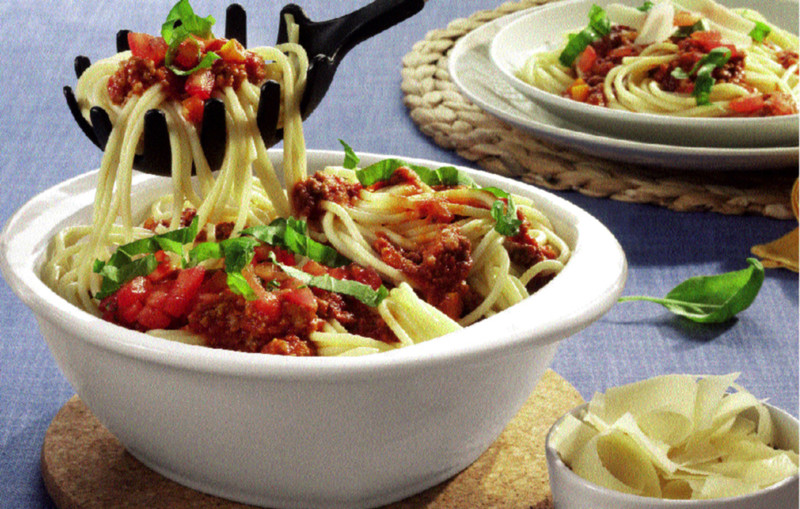 The correct way to cook pasta If the pasta is still too hard or which is almost worse overcooked, then even the most lavishly prepared sauce will not save it. Give the pasta the attention it deserves, and cook it the way they do in Italy al dente, or with a little bite. Proceed as follows to make sure your pasta succeeds: For 100 to 125 grams of dried pasta (sufficient for 1 portion), bring at least 1 litre of water to the boil. Unsalted water boils more quickly, so it is better not to add salt until the water is boiling. Use a large, tall saucepan so that the pasta has enough room while it is cooking and does not stick together.
The correct way to cook pasta If the pasta is still too hard or which is almost worse overcooked, then even the most lavishly prepared sauce will not save it. Give the pasta the attention it deserves, and cook it the way they do in Italy al dente, or with a little bite. Proceed as follows to make sure your pasta succeeds: For 100 to 125 grams of dried pasta (sufficient for 1 portion), bring at least 1 litre of water to the boil. Unsalted water boils more quickly, so it is better not to add salt until the water is boiling. Use a large, tall saucepan so that the pasta has enough room while it is cooking and does not stick together.
It is not essential to add any (olive) oil to the cooking water; it is really a matter of personal taste. Stirring will also help to prevent the pasta from sticking. Put the pasta in the boiling water. Stand long pieces of pasta in the water and allow them to soften and slide down. Cook the pasta, uncovered, in bubbling water, remembering to stir it from time to time. Towards the end of the cooking time, scoop out a piece of pasta to check whether it is cooked: it should be soft but still with a little bit of resistance to it.
As cooking times vary according to the size and thickness of the pasta, please follow the cooking instructions on the packet. The cooking times for homemade and fresh pasta are much shorter than for dried. When the pasta is cooked, drain it in a sieve and then pour it into a warm bowl with the sauce and stir together to stop the pasta from sticking. 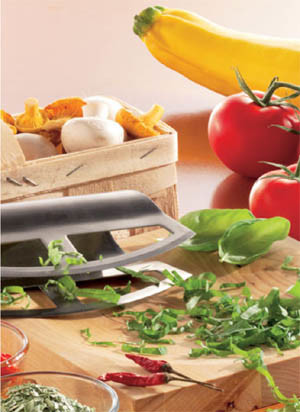 It is best not to drain the pasta completely. Lots of recipes call for some of the cooking liquid anyway, and moist pasta absorbs the sauce more readily. If you want to chill the pasta perhaps for a salad do not leave it in a sieve to cool down.
It is best not to drain the pasta completely. Lots of recipes call for some of the cooking liquid anyway, and moist pasta absorbs the sauce more readily. If you want to chill the pasta perhaps for a salad do not leave it in a sieve to cool down.
Run it under cold water for a few moments, and then add a knob of butter or a little oil, either of which will prevent it from sticking. 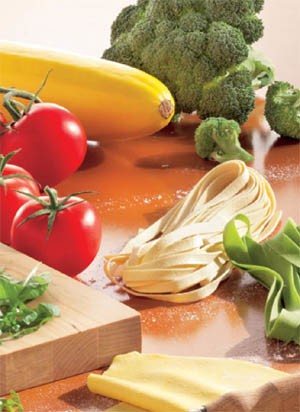 Homemade pasta Dried pasta is easy to cook and does not take long. However, if you really want to treat your family to something special, then serve them with fresh, homemade egg pasta or pasta fatta a casa, as the Italians say. Of course, it requires a little more effort especially if you do not have a pasta machine but your reward will be an unbeatable flavour experience. Try our basic recipe, which makes enough to serve 4 people: 400 g plain flour
Homemade pasta Dried pasta is easy to cook and does not take long. However, if you really want to treat your family to something special, then serve them with fresh, homemade egg pasta or pasta fatta a casa, as the Italians say. Of course, it requires a little more effort especially if you do not have a pasta machine but your reward will be an unbeatable flavour experience. Try our basic recipe, which makes enough to serve 4 people: 400 g plain flour
tsp salt
4 eggs
1 tbsp olive oil Combine the flour and salt, and make a well in the middle. Whisk together the eggs.
Work first the eggs into the flour, then the oil. Bring the flour down from the sides evenly. Knead the dough thoroughly for at least 10 minutes. You can start with an electric mixer or dough hook, but do finish it by hand. The dough should be smooth and silky. Add more water if it is too firm and more flour if it is still sticky.
Then shape the dough into a ball, cover it and leave it for 30 minutes. Sprinkle a board or the worktop with flour. Roll the pasta dough out thinly in portions and cut into the desired shapes. Lay the pasta on a floured towel to dry before cooking it, as this makes it easier to handle. You can use a pasta wheel on this basic dough or cut it into different shapes (that you could then fill) or lasagne sheets. You could also add a touch of variety to the usual pale pasta yellow by making coloured pasta.
Simply add any of the following ingredients to the basic dough recipe given above. For green pasta: A handful of washed, very finely chopped herbs or 250 g cooked, squeezed, very finely chopped spinach For yellow pasta: 1 tsp saffron threads, soaked in 1 tsp warm water For dark red pasta: 23 tbsp freshly cooked beetroot passed through a sieve For light red pasta: 3 tbsp tomato pure For orange pasta: A few tablespoons of cooked paprika pure For light brown pasta: Soak 25 dried porcini in a few tablespoons of hot water, then chop them very finely For black pasta: 1 tsp squid ink You might have to use a little more flour than indicated in the basic recipe so the dough is not sticky. When deciding on a pasta shape, the most important thing is to get the right combination of pasta and sauce. The basic rule to follow is: the thicker and more lumpy the sauce is, the wider the pasta should be. Twisted, curly or wavy pasta is very good for taking up a lot of sauce. Long, thin pasta is better for light sauces.
Next page
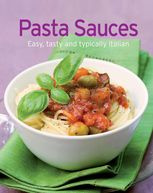

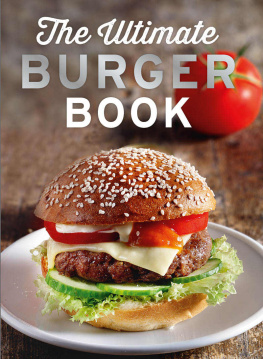




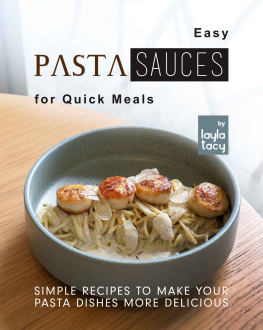
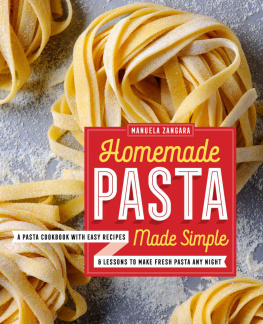



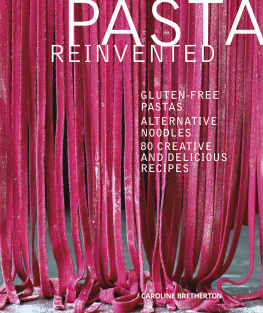
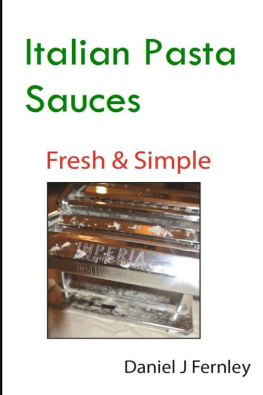
 Pasta Sauces Are you a true pasta lover, and would ideally eat it every day? Well, why not? The sauces that make past a complete meal are just as varied and interesting as the ever-popular Italian delights. Whether classic pasta, creamy cheese, fish, seafood, meat or vegetable sauces, theres plenty of choice for your favourite pasta! Pasta Sauces Naumann & Gbel Verlagsgesellschaft mbH
Pasta Sauces Are you a true pasta lover, and would ideally eat it every day? Well, why not? The sauces that make past a complete meal are just as varied and interesting as the ever-popular Italian delights. Whether classic pasta, creamy cheese, fish, seafood, meat or vegetable sauces, theres plenty of choice for your favourite pasta! Pasta Sauces Naumann & Gbel Verlagsgesellschaft mbH The correct way to cook pasta If the pasta is still too hard or which is almost worse overcooked, then even the most lavishly prepared sauce will not save it. Give the pasta the attention it deserves, and cook it the way they do in Italy al dente, or with a little bite. Proceed as follows to make sure your pasta succeeds: For 100 to 125 grams of dried pasta (sufficient for 1 portion), bring at least 1 litre of water to the boil. Unsalted water boils more quickly, so it is better not to add salt until the water is boiling. Use a large, tall saucepan so that the pasta has enough room while it is cooking and does not stick together.
The correct way to cook pasta If the pasta is still too hard or which is almost worse overcooked, then even the most lavishly prepared sauce will not save it. Give the pasta the attention it deserves, and cook it the way they do in Italy al dente, or with a little bite. Proceed as follows to make sure your pasta succeeds: For 100 to 125 grams of dried pasta (sufficient for 1 portion), bring at least 1 litre of water to the boil. Unsalted water boils more quickly, so it is better not to add salt until the water is boiling. Use a large, tall saucepan so that the pasta has enough room while it is cooking and does not stick together. It is best not to drain the pasta completely. Lots of recipes call for some of the cooking liquid anyway, and moist pasta absorbs the sauce more readily. If you want to chill the pasta perhaps for a salad do not leave it in a sieve to cool down.
It is best not to drain the pasta completely. Lots of recipes call for some of the cooking liquid anyway, and moist pasta absorbs the sauce more readily. If you want to chill the pasta perhaps for a salad do not leave it in a sieve to cool down. Homemade pasta Dried pasta is easy to cook and does not take long. However, if you really want to treat your family to something special, then serve them with fresh, homemade egg pasta or pasta fatta a casa, as the Italians say. Of course, it requires a little more effort especially if you do not have a pasta machine but your reward will be an unbeatable flavour experience. Try our basic recipe, which makes enough to serve 4 people: 400 g plain flour
Homemade pasta Dried pasta is easy to cook and does not take long. However, if you really want to treat your family to something special, then serve them with fresh, homemade egg pasta or pasta fatta a casa, as the Italians say. Of course, it requires a little more effort especially if you do not have a pasta machine but your reward will be an unbeatable flavour experience. Try our basic recipe, which makes enough to serve 4 people: 400 g plain flour